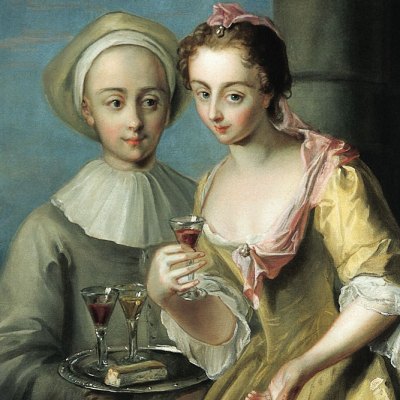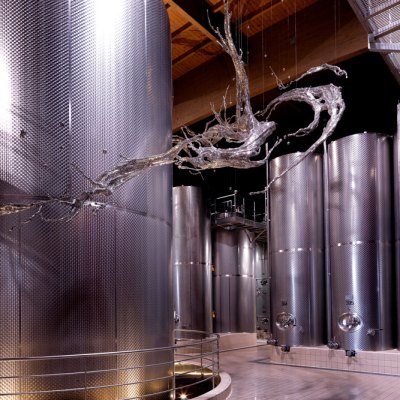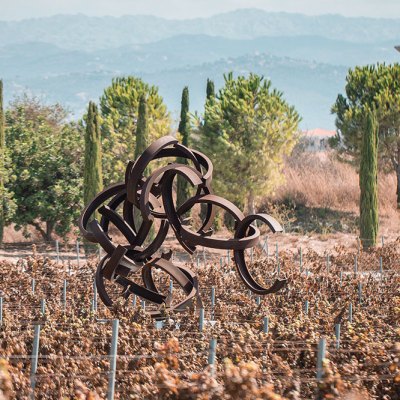From the January 2024 issue of Apollo. Preview and subscribe here.
To celebrate its 280th anniversary, Moët & Chandon has launched a new cuvée: Création No. 1, part of the Collection Impériale line, named in honour of the partnership between the founder’s grandson Jean-Rémy and Napoleon (who drank only Moët from 1801 onwards). Benoît Gouez, the cellar master behind the new champagne, wanted to ‘make a drink for eternity’. In pursuit of a different sort of eternity, Moët has also commissioned American artist Daniel Arsham to make a series of works in response to the methods and subtlety of their craft.
The Imperial blend combines wines made from the Chardonnay grape. Seven vintages come together, each of which has been aged using a different technique. One vintage, from 2000, has been fermented in oak casks, a technique no longer in regular use. Others have been aged in steel casks and some have been bottle-aged on lees (that is, in contact with the spent yeast). Given that champagne grapes are obtained from various communes and producers – from any of 319 villages in Champagne – the art is in blending and playing with the different environments in which they age. The bouquet of aromas includes smoky liquorice and mocha with complex flavour notes that slowly reveal a toasted, smoky grilled character of dried fig and plum, and as there is no dosage (sugar) added it leaves the drinker longing for more.
For Arsham it is the span of history contained in a single bottle that is exciting. ‘When you think about the different eras Benoît selected,’ he says, ‘seven different years dating back to different moments […] a time when somebody was alive who is now no longer with us, and so on, and he selected these moments in time, blended them together to create a new experience for each of us in the present.’ Arsham’s awareness of time past and time present in time future is expressed as a kind of retrofuturism that infuses his sculptures.
It is not just time that interests Arsham. He also sees a parallel in the wine-making process. ‘Sculpture is a manipulation of materials,’ he says, ‘and the manipulation that transforms the blends of wine from different eras is much like sculpture.’ Arsham visited Épernay, home of Moët & Chandon, in the spring to research the artefacts, archives and previous representations of the champagne’s heritage. His response to the Moët brief was inspired by a large stained-glass window at the entrance to the cellars; designed by Félix Gaudin (1851–1930), it shows abundant harvests, cherubs, providential angels and the original chateau set within the rolling Champagne landscape. Arsham’s 21st-century riposte is a large, white bas-relief depicting putti and a personification of Fame.
In this relief, which is at the heart of the collaboration and is the inspiration for the limited-edition bottles, Arsham sprinkled quartz crystals throughout the resin mix and embedded larger pieces of the stone. This is part of a larger project, the artist says, ‘around a kind of fictional archaeology that began with looking at contemporary objects as if they were being viewed in the future, as calcified or eroded objects’. The crystal ‘has this feeling that it’s disintegrated or that it’s falling apart’. Yet for Arsham there is a tension here: ‘We associate crystallisation with growth, moving towards a fixed point, or getting larger,’ he says, but suggests that it could be ‘falling apart or growing towards some sort of completion’.
His agreeing to design the bottle, of which only 85 examples have been produced, comes from his background working with Merce Cunningham, when producing set designs made him realise product design was not inimical to art. Arsham is not a stranger to working with product design and brands: previous collaborators have included Tiffany & Co. and Adidas. ‘Let’s say it can be more egalitarian to apply my work to products than just showing in a gallery,’ he says. The bottle design is effectively a white case with motifs taken from his relief in Épernay; the bottle can be removed to be consumed immediately, or left in the casing for protection while it ages. The casing is both sculpture and functional cover. Ideally, the champagne will be aged to be enjoyed at a future date – but it’s not compulsory.
From the January 2024 issue of Apollo. Preview and subscribe here.


